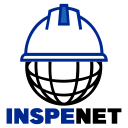The SupraMarine consortium, comprising Air Liquide, CentraleSupélec, ITP Interpipe, Nexans and RTE, has announced the development of a technology demonstrator that could transform the way power generated at remote offshore wind farms is transported. remote offshore wind farms.
This initiative seeks to test the feasibility of a high-voltage alternating current (HVAC) transmission system using high-temperature superconducting (HTS) cables, capable of transporting electricity with almost zero losses thanks to their cooling with liquid nitrogen.
Advantages over traditional direct current
The SupraMarine project offers an alternative to the direct current (HVDC) connections that currently dominate marine energy infrastructures. offshore power infrastructures. By simplifying part of the grid connection and reducing energy losses, the superconducting HVAC system could improve the competitiveness of offshore offshore wind, contributing to the sustainable development of the European electricity system.
A consortium with defined functions
Each member of the consortium brings key expertise:
- Air Liquide supplies the cryogenic plants with Turbo-Brayton technology and supervises the thermal operation of the system.
- CentraleSupélec, through its GeePs laboratory, promotes scientific research and specialized doctoral training.
- ITP Interpipe designs the cryostatic enclosure that guarantees the superconducting state of the cables.
- Nexans leads the development of superconducting cables, joints and terminations for HVAC systems.
- RTE acts as a validator of the system integration in real network conditions.
One of the project’s objectives is to reduce Europe’s dependence on imports of critical components for the energy transition. energy transitionFor this reason, the SupraMarine project uses mostly European materials, strengthening technological autonomy in a strategic sector such as offshore energy.
Testing before 2028 and public funding
The project is financed with 7.3 million euros from the French government under the France 2030 program, managed by ADEME, and the prototype system will be tested before 2028.
Source: Nexans


